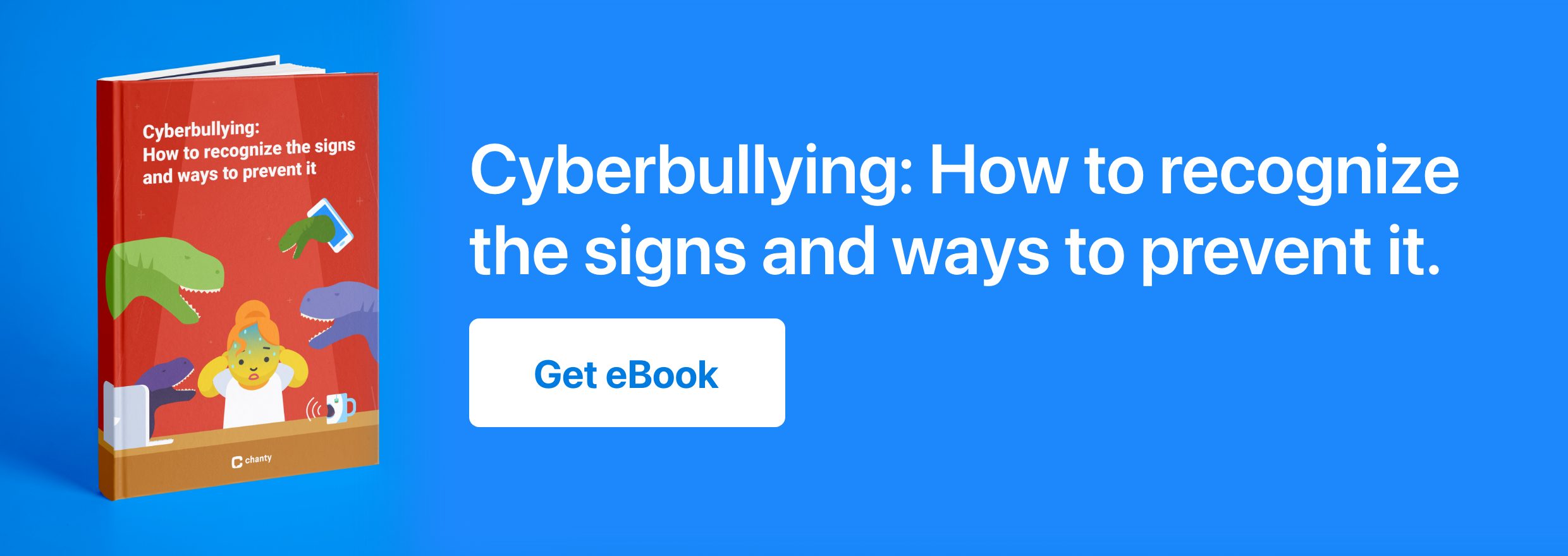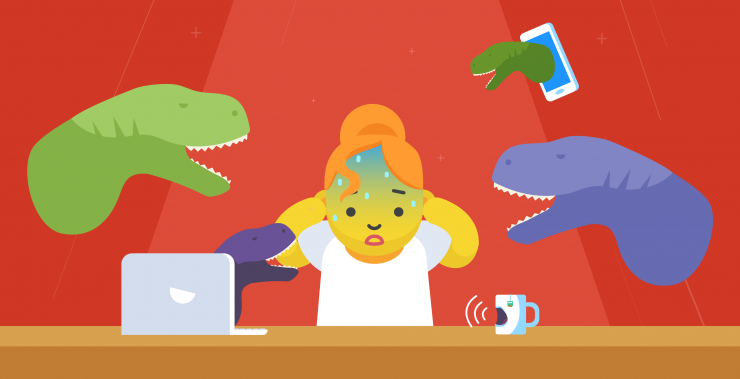Cyberspace has been revolutionized in the past couple of decades and now more people are using internet services and mobile devices than ever before. However, with all the advantages of cyberspace and the good that the online world provides users, there are also some downsides. With every innovation comes new challenges, and cyberbullying is one of the darker consequences of our hyper-connected age. This alternative medium of communication has also enabled bullies to harass people through the means and methods of cyberbullying, a form of online bullying.
It has enabled bullies to target their victims via digital mediums and sometimes even totally anonymously, adding an increased degree of threat to the equation. The phenomenon of cyberbullying has been defined and established via various terms such as:
- Cyberbullying
- Email bullying
- Electronic bullying
- Mobile bullying
- SMS bullying
- Social media bullying
Bullying has often been associated with teenagers and school and it hardly ever crosses our mind with regards to its rampant penetration within professional environments. It has been an evident issue in recent times so much so, that many companies have added it as a part of their terms and conditions of employment; working with employees and stakeholders to reduce the risks and occurrences of cyberbullying in the workplace.
As workplace cyberbullying is a relatively new area of bullying, there isn’t a significant amount of research and clear data available on the topic.
However, there is enough evidence of cyberbullying impacting the performance of employees in the long run. A lot of companies have made the cyberbullying prevention policy a part of their orientation and onboarding process to avoid unwanted, less than desirable issues in the workplace.
As the current pandemic drove many employees to work from home and remote locations, the threat of cyberbullying has further increased.
Cyberbullying in the workplace can be defined as repeated behavior that offends, intimidates, sabotages, and negatively impacts the professional work of the victim in the work environment over a prolonged period of time. If there is a pattern of negative acts against an individual on digital platforms, it comes under the purview of cyberbullying.

Key Indicators of Cyberbullying at Work
Cyberbullying in the workplace mostly goes unnoticed, but its effects are very disastrous to individuals and the organization as a whole. It is important to spot the signs early so that further harm can be avoided. There are several telltale behaviors of employees who fall victim to cyberbullying, which should not go unnoticed.
One of the early warning signals is increased absenteeism. The victim of cyberbullying tends to turn into an absent worker. It may be because of anxiety, stress, or maybe their mode of keeping themselves away from the toxic atmosphere when they are not safe or heard.
In conjunction with absenteeism, there is often a decline in productivity: a previously high-performing employee suddenly cannot meet deadlines makes more mistakes, or fails to exercise initiative. The consequences of bullying can leave a person unable to concentrate and thus lower overall productivity at work.
Another important indicator is emotional signs. Victims of cyberbullying are often irritable, anxious, or frustrated. At other times, they may withdraw or become less responsive to their peers. If you observe such emotional changes, then it would be prudent to investigate the possible causes of this behavior.
Social withdrawal is another common sign. If an employee who used to participate in team activities starts to distance themselves from social gatherings or team meetings, this is a strong indication that something is wrong. Fear of being targeted again may cause them to avoid such situations altogether.
You may also notice a decrease in engagement. Employees who are victims of cyberbullying start to avoid communication or withdraw from collaborative projects. Their lack of involvement can disrupt team cohesion and morale which may affect the whole department or organization.
Finally, one of the major effects of continued cyberbullying is loss of confidence and self-esteem. In this case, prolonged harassment faced online tends to make an individual lose trust in themselves and their capabilities over time, hence feeling dejected. This erosion of confidence will have a considerably negative effect on their performance and general life, hence isolating them from their colleagues even more.
Knowing these signs means that employers and HR can act to prevent further damage from cyberbullying. It is a question of recognizing the signs and offering the right support, not only for the protection of the affected employee but also for the sake of maintaining a healthier and more supportive working environment.
Types of cyberbullying
Here are some ways in which cyberbullying takes place in the workspace:
Through Emails: This has been around for a very long time and sometimes even the victim doesn’t realize that they are being bullied because of the nature of the email. However, if the email threatens the victim’s job or they are handed over non-work-related tasks, that amounts to bullying.
If the entire organization is copied on an email that explains how you screwed up or if a small mistake is being magnified out of proportion to hamper your reputation and relationships within the organization, that is email bullying too. Patronizing and condemning language and tone of the email or simply spamming someone’s inbox with more than a reasonable amount of work, or simply spamming someone in general are also some examples of email bullying.
If an individual is intentionally targeted or left out of email conversations happening among other employees, is given wrong details about the events, or isn’t included in other teamwork which everyone is a part of, chances are that he or she is being bullied.
Through Social Media: gaslighting at work happens when someone posts humiliating messages on social media platforms which hamper the reputation of the victim. Social media bullying might be done through snide remarks about someone, their work, or the project they are associated with. It could simply be an act of excluding someone from discussion with the sole purpose of humiliating them.
Sometimes, the bully or bullies could use hashtags to embarrass someone publicly. For example, one of my ex-colleagues who was a top Instagram influencer figured out the best time to post on Instagram for maximum traction. However, the bullies got in on it and they would spam her post with lewd comments.
At the time, it made her delete her social media profile with a long list of followers due to the fear of losing her job and reputation forever. Companies can figure out the best times to post on Instagram to educate people about cyberbullying and its consequences to make people realize the mistakes they might have made knowingly or unknowingly.
Facebook has various group features that you can set while creating a group by initially laying down some ground rules as an important part of moderation. You can select the feature “No Hate Speech or Bullying” to make sure everyone feels safe.
Through Text Messages: Bullies often use cell phone numbers to harass or bully employees. It is common for people to share their personal numbers with people at work and that makes cyberbullying even simpler.
Most bulk SMS apps are mainly designed for the purpose of SMS marketing and promotions. However, everything finds misuse in today’s daytime and age. Of course, applications such as Smartlook can provide mobile app analytics metrics which can be useful. Notwithstanding, text messages are not trackable, thanks to the multiple apps designed for the same purpose.
This gives the bullies the anonymity they want and also ends up stressing out the victim. Text messages can almost never be traced back to the sender. The solution is to contact the bulk SMS agencies in your community and apprise them of the guidelines to keep them on the same page.
There are other ways in which cyberbullying takes place in the workplace:
Outing someone: If an employee shares the secrets of another employee with a larger group of people through email, social media, or even personal networks or text messages, it amounts to bullying. The secret may or may not be work-related.
The Troll Army: None of us are alien to the concept of trolls on the internet. Well, that is true even for workplaces. Sometimes bullies post mean comments on the victim’s social media that are unrelated to the post. This may happen on public handles but even if it happens on the internal network, that also amounts to trolling.
Impersonating superiors or clients: This one takes the cake. This has happened to me personally and I can vouch for the kind of distrust and insecurity it creates in the workplace.
There might be a new employee on the block and the people who have been there far longer plan to play a prank on them by impersonating a superior to get their work done, to confuse them and mislead them, or to give out information that might throw them off track.
That’s the reason why companies should care about all employees equally and treat them well. This kind of bullying generally happens through emails and the victim is confused about the work at most times.
Whatever the means, whatever the method, and whatever the purpose of the bully, the truth is that in the end, it affects the performance of the victim in many ways. It can cause long-lasting psychological problems. It also poses risks to workplace health and safety, personal relationships, and general health. In addition to health risks such as anxiety, stress, panic attacks, increased blood pressure, and sleep problems, bullying can have a significant impact on the victim’s performance at work.
Cyberbullying effects
Workplace cyberbullying has many bad effects on employee performance and productive efficiency. Whether direct or indirect, it simply generates a negative atmosphere resulting in stress, unwanted pressure, and interpersonal issues that come from inefficient interpersonal communication. For example, a hurtful email sent to one employee from another reduces the team spirit and the desire to work together. Therefore, it produces less collaborative projects and a lower level of employee efficiency.
It is pretty evident that if being in a workspace or being a part of the organization doesn’t feel safe for the employee, their work will suffer. The ever-apparent stress wouldn’t let the employee perform to the best of their abilities.
What other results can workplace cyberbullying bring into an organization?
Lower concentration levels: As a result of being bullied, the attention span of the employee greatly suffers. It becomes increasingly difficult for the employee to pay attention to detail as they normally would and silly mistakes begin to show up in their work. It leads to poor performance and burnout; and sometimes to bigger slip-ups which can permanently end the stint of the employee at the organization or even their entire career.
Indecisiveness: When we are not sure about ourselves, how can we be sure about anything else? When the victim is not able to voice their problems, or even if they do, they are not heard and proper measures are not taken, they might start to second guess themselves about everything. Simple problems would seem mammoth and simple tasks might seem herculean to them.
Inefficiency: When the employee who used to finish all the work on time and leave before everyone else, suddenly starts struggling to even complete their daily tasks sparingly, there is something wrong! It might be personal but then again top-notch workers don’t let non-work-related issues hamper their performance like that, do they? The victim’s productivity might suffer due to their divided attention towards dealing with unwanted issues of bullying.
Loss of self-respect: More often than not when we are being subjected to abuse of any kind and we do not stand up for ourselves, it makes us lose faith and respect in our own capabilities and ourselves. This might be one of the reasons that victims of cyberbullying who generally feel helpless in situations lose faith in themselves and suffer from the loss of self-respect and esteem.
How to stop cyberbullying
Victims not only suffer from the loss of motivation towards work but they also lose precious time over trying to fight this severe yet unwanted issue at hand. The victim might be trying to find support for themselves within the organization to fight the bullies.
Some companies have policies in place to help employees feel safe in the work environment, however, most of the firms have yet to come up to speed on it. They might be busy finding ways to avoid their bully, professionally and personally.
They might spend their time either planning or daydreaming about how they will fight off their bully into the ground. When in reality, all they are getting is a disappointment for their efforts. One of the ways to do this is to make sure you deal with cybersecurity threats in advance and prevent any issues, which can be effectively managed with CSPM solutions to ensure comprehensive security across your digital environment.
Cyberbullying can make employees feel isolated and traumatized. The helplessness leads to confusion and disorientation towards their work in most cases and all these might have a lasting impact on the employee and their performance. Not to mention, it might ruin their career, for good. Most people either change their jobs or get out of the arrangement where they have to be an employee and instead get started with their own business.
If you have been a victim of cyberbullying and you need to be away from the crowd for a few days to improve your mental health, you should totally do it. If you are looking for a fresh start too, here’s how you can start an online business or start the clothing line you always wanted. There are a lot of options out there that you might want to explore if you are dissatisfied with your job scenario in general, but don’t give in to bullying.
The HR department and the managers in the organization play a huge role in eliminating cyberbullying from the work culture. In the wake of the current pandemic, as a manager or HR you can help the firm and the employees by setting up a remote employee monitoring software that helps you track and better the performance of your employees.
This tool might also help in raising any red flags about the lowering performance of your best employee out there and guess what, you will be able to address the issue in time. Many other remote work tools can improve collaboration and communication from the start, which may even help prevent issues from arising in the first place.
It is extremely important to take care of cyberbullying in these times as most of the employees are driven within the four walls of their homes or are working remotely. Cyberbullying might become more apparent in these times due to the increased dependency on online mediums for each and every kind of work which could earlier be done without any online assistance. Let’s pledge to stop cyberbullying at the very outset and create a favorable environment for everyone in the workplace.
Protecting yourself from workplace cyberbullying
Stopping cyberbullying in the workplace isn’t just about addressing the issue after it occurs; it’s about taking steps to protect yourself and prevent these harmful incidents from happening in the first place. Victims often find themselves overwhelmed, trying to maintain their performance while coping with the emotional toll and searching for ways to confront or avoid their bullies. The disappointment that comes from feeling unsupported can be devastating, impacting motivation and overall career progression.
While company policies are improving, many organizations are still catching up. As digital communication becomes the primary means of interaction, having strategies to protect yourself has never been more vital. Here are practical steps to safeguard your well-being and strengthen your defenses:
- Secure your online presence: Tighten the privacy settings on your social media accounts and be careful about sharing personal information that could be misused. Protecting your digital footprint makes it harder for bullies to find ways to target you.
- Document incidents: If you experience or witness cyberbullying, it is important to keep detailed records. Save emails, take screenshots, and note any patterns. This evidence can be valuable when reporting to HR or seeking support.
- Use blocking and reporting features: Don’t hesitate to block people who are harassing you. Reporting offensive behavior to platform administrators or your organization’s HR department can help stop the bullying.
- Set and communicate personal boundaries: Set clear boundaries between work and personal interactions. Respectfully enforce those boundaries when someone crosses them, whether in professional or social communications.
- Know your rights and resources: Understanding your company’s policy on cyberbullying and the support systems available is essential. Many HR departments are working to improve awareness and prevention. Familiarise yourself with these policies and don’t be afraid to ask for help.
As the remote working expands, awareness and proactive measures are key to fostering a respectful and supportive environment. Remember, if the stress of dealing with a toxic work culture becomes overwhelming, it’s okay to take a step back and look after your mental health. You deserve to work in a safe and positive environment, and your well-being should always come first. Let’s work together to create a cyberbullying-free workplace where everyone feels empowered and respected.










Add comment